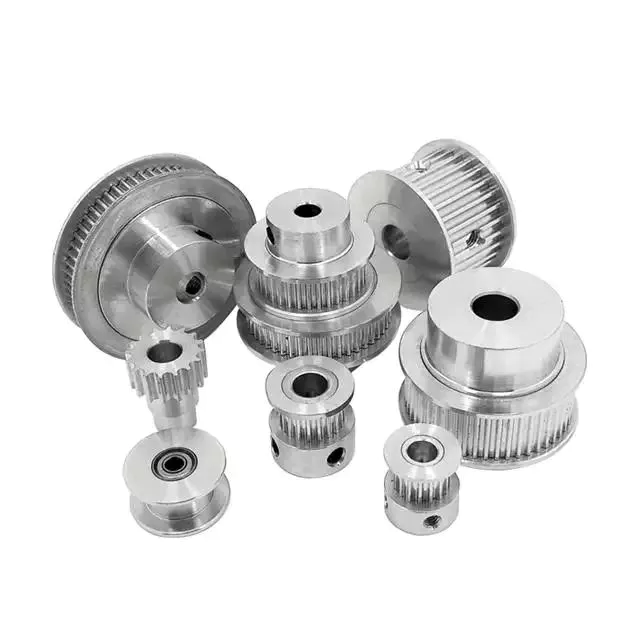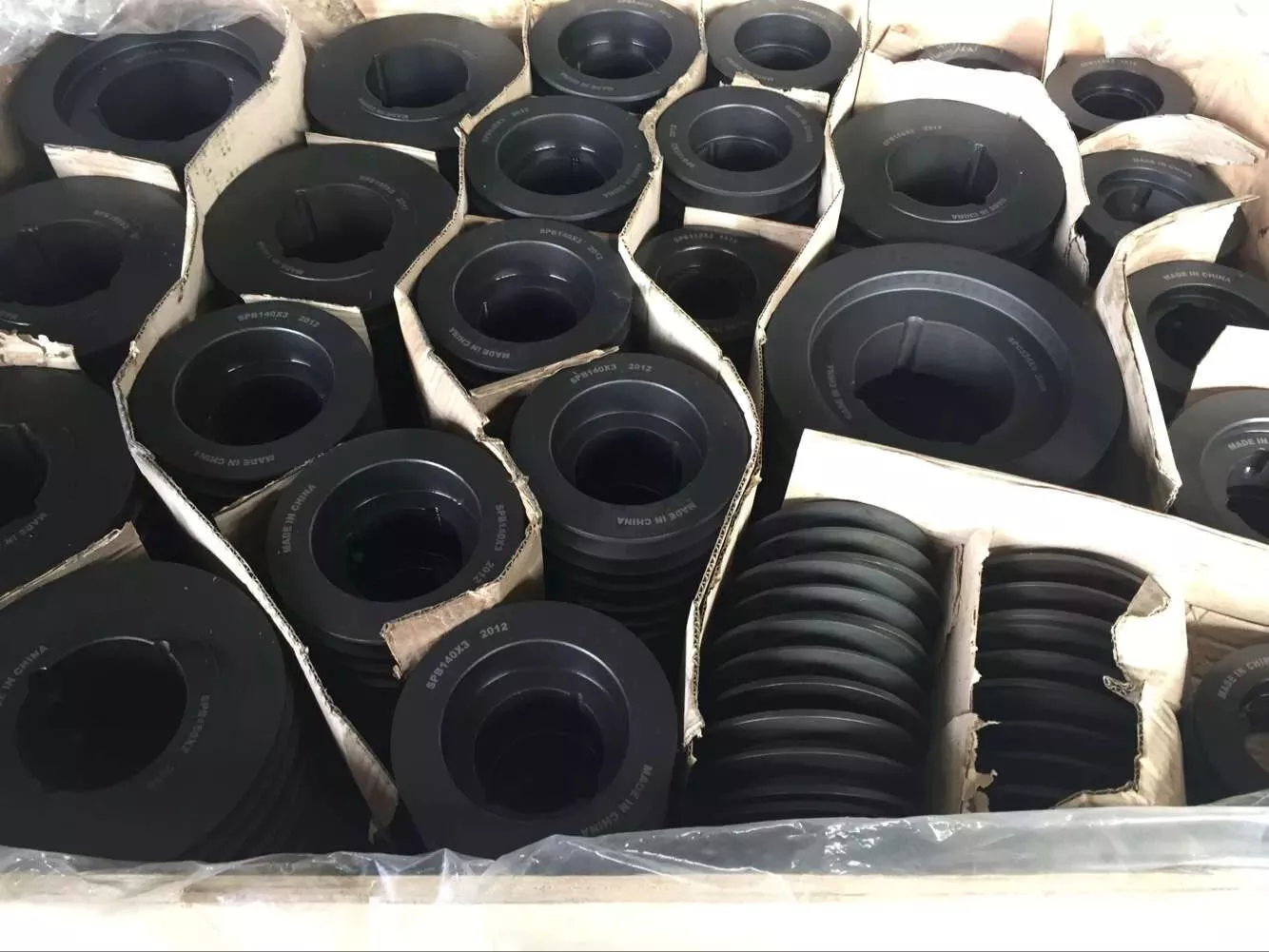Ürün Açıklaması
Şirket Profili
Avantajlarımız
-
Highly customized, minimum order accept 1 roller.
Price favorable.
Delivery time is faster and more flexible!
Sertifikalar
SSS
Q: What're your main products?
A: DC brushless motor roller/AC 3ph motor roller/Direct drive motor roller/Oil immersed motor roller/Gear reduction motor/controller box
Q: How to select a suitable motor roller?
A:If you have motor roller pictures or drawings to show us, or you have detailed specs like conveyor mode(pallet or belt),linear speed,loading weight,loading object material,roller diameter,length,voltage and noise level etc, then we can recommend suitable motor roller to you.
Q: Do you have a customized service for your standard motor rollers?
A: Yes, we can customize.
Q: Do you have an individual design service for motor rollers?
A: Yes, we would like to design roller individually for our customers.
Q: What's your lead time?
A: Generally speaking, our regular standard product will need 7~15days, a bit longer for customized products. But we are very flexible on the lead time, it will depend on the specific orders.
Ürün Parametreleri
Ayrıntılı Fotoğraflar
/* March 10, 2571 17:59:20 */!function(){function s(e,r){var a,o={};try{e&&e.split(“,”).forEach(function(e,t){e&&(a=e.match(/(.*?):(.*)$/))&&1
| Malzeme: | Karbon Çelik |
|---|---|
| Yüzey İşlem: | Electroplating |
| Motor Type: | Build-in Motor |
| Kurulum: | Horizontal |
| Voltage: | 400V |
| Linear Speed: | 0.57m/S~2.12m/S |
| Örnekler: |
US$ 500/Piece
1 Adet(Min.Sipariş) | |
|---|
| Özelleştirme: |
Mevcut
| Özelleştirilmiş İstek |
|---|

Can you explain the concept of “efficiency” in pulley systems?
Makaralı sistemlerde verimlilik, sistemdeki herhangi bir kayıp veya verimsizliği hesaba katarak, çıkış işi veya gücünün giriş işi veya gücüne oranını ifade eder. Makaralı sistemin giriş enerjisini ne kadar etkili bir şekilde faydalı çıkış enerjisine dönüştürdüğünü temsil eder.
Bir makaralı sistemin verimliliği, sürtünme, mekanik kayıplar ve makaraların ve halatların tasarımı ve durumu gibi çeşitli faktörlerden etkilenebilir. Makaralı sistemlerdeki verimlilik hakkında anlaşılması gereken bazı önemli noktalar şunlardır:
1. Mekanik Avantaj ve Verimlilik: Makaralı sistemler, bir yükü kaldırmak için gereken efor kuvvetini azaltarak mekanik bir avantaj sağlayabilir. Ancak, daha yüksek bir mekanik avantajın genellikle daha az efor gerektiği anlamına gelse de, daha düşük verimliliğe de yol açabileceğini unutmamak önemlidir. Bunun nedeni, mekanik avantaj arttıkça sistemin daha yüksek sürtünme kayıpları ve diğer verimsizlikler yaşayabilmesidir.
2. Sürtünme ve Verimlilik: Sürtünme, kasnak sistemlerinin verimliliğinde önemli bir rol oynar. Kasnak tekerlekleri ile halatlar veya kayışlar arasındaki etkileşim, sistemin genel verimliliğini azaltan sürtünme kayıplarına neden olabilir. Sürtünme, düşük sürtünmeli yataklara sahip kasnaklar kullanılarak veya temas yüzeyleri yağlanarak en aza indirilebilir.
3. Halat veya Kayış Malzemesi: Halat veya kayış malzemesi seçimi, bir kasnak sisteminin verimliliğini etkileyebilir. Farklı malzemeler, genel verimliliği etkileyebilecek değişen sürtünme katsayılarına, esnekliğe ve dayanıklılığa sahiptir. Örneğin, düşük sürtünmeli ve yüksek mukavemetli bir halat veya kayış kullanmak, enerji kayıplarını azaltmaya ve verimliliği artırmaya yardımcı olabilir.
4. Kasnak Tasarımı ve Durumu: Kasnakların tasarımı ve durumu da verimliliği etkiler. Kasnaklar düzgün hizalanmış, pürüzsüz yüzeylere sahip olmalı ve hasar veya aşınmadan uzak olmalıdır. Yanlış hizalanmış veya aşınmış kasnaklar sürtünmeyi artırabilir ve verimliliği düşürebilir.
5. Sistem Yükü: Bir makaralı sistemin verimliliği, kaldırılan veya taşınan yükün büyüklüğüne göre değişebilir. Daha yüksek yükler, artan sürtünmeye ve mekanik kayıplara neden olarak daha düşük verimliliğe yol açabilir.
Verimlilik genellikle yüzde olarak ifade edilir ve 100%, tüm giriş enerjisinin yararlı çıkış enerjisine dönüştürüldüğü mükemmel verimli bir sistemi temsil eder. Gerçek dünyadaki kasnak sistemlerinde, verimlilik genellikle sürtünme, ısı üretimi ve diğer kayıplar gibi çeşitli faktörler nedeniyle 100%'den daha azdır.
Kasnak sistemlerini tasarlarken veya değerlendirirken verimliliği göz önünde bulundurmak önemlidir. Daha yüksek verimlilik, giriş enerjisinin daha etkili kullanımı, daha az enerji israfı ve genel performansın iyileştirilmesi anlamına gelir.

How are pulleys used in manufacturing processes and assembly lines?
Pulleys play a crucial role in manufacturing processes and assembly lines, facilitating the movement of materials, components, and products. They are utilized in various ways to enhance efficiency, increase productivity, and streamline production. Here's how pulleys are commonly used in manufacturing processes and assembly lines:
1. Conveyor Systems:
Pulleys are extensively employed in conveyor systems, which are integral to manufacturing and assembly lines. Conveyor belts or chains run over pulleys at different points along the line, transporting materials or products from one workstation to another. The pulleys help guide and support the conveyor belts or chains, ensuring smooth and controlled movement. By utilizing pulleys of different sizes or configurations, conveyor systems can be designed to accommodate various layouts, inclines, or speed requirements.
2. Material Handling:
Pulleys are used to facilitate the lifting, lowering, and movement of materials in manufacturing processes. Cranes, hoists, and lifting equipment often incorporate pulley systems to provide mechanical advantage and precise control over heavy loads. The pulleys, along with ropes, cables, or chains, allow operators to lift and position materials with minimal effort and improved safety.
3. Assembly Line Automation:
In automated manufacturing and assembly lines, pulleys are utilized in robotic systems to control the movement of robotic arms. The pulleys are incorporated into the mechanism that guides the cables or belts connected to the robotic arms. By adjusting the position and tension of the pulleys, precise and coordinated movements can be achieved, enabling efficient assembly processes.
4. Tensioning and Alignment:
Pulleys are crucial for maintaining proper tension and alignment in manufacturing processes. Tensioning pulleys are used to apply the appropriate tension to belts or chains, ensuring optimal power transmission and preventing slack or slipping. Alignment pulleys are employed to align belts or chains, minimizing wear, reducing vibrations, and prolonging the life of the components.
5. Power Transmission:
Pulleys are central to power transmission in manufacturing processes and assembly lines. They are used in conjunction with belts, chains, or gears to transfer rotational motion and power from one component to another. By selecting pulleys of different sizes or ratios, the speed and torque can be adjusted to suit specific production requirements.
6. Tool and Machine Positioning:
In manufacturing processes, pulleys are often integrated into tool positioning systems or adjustable machine setups. By using pulleys and cables, tools or machine components can be easily repositioned, allowing for quick changeovers or adjustments to accommodate different workpieces or production tasks.
Overall, pulleys are indispensable in manufacturing processes and assembly lines, enabling efficient material handling, precise movement control, proper tensioning and alignment, power transmission, and flexible tool positioning. Their use contributes to increased productivity, improved workflow, and enhanced automation in the manufacturing industry.

How does a fixed pulley differ from a movable pulley?
A fixed pulley and a movable pulley are two distinct types of pulleys that differ in their design and functionality. Here's a detailed explanation of their differences:
1. Design and Attachment: A fixed pulley is attached to a stationary structure, such as a ceiling or wall, using a mounting bracket or other means. It remains fixed in place and does not move during operation. In contrast, a movable pulley is attached to the load being moved and moves along with it. It is typically suspended by a rope or cable and can freely move up and down.
2. Mechanical Advantage: When it comes to mechanical advantage, a fixed pulley does not provide any advantage. It changes the direction of the force applied but does not reduce the effort required to lift the load. On the other hand, a movable pulley provides mechanical advantage by reducing the effort needed to lift the load. It distributes the load between the rope segments attached to the movable pulley and the fixed point, making it easier to lift heavy objects.
3. Force Distribution: In a fixed pulley, the force applied to one end of the rope or belt is redirected to change the direction of the force. The load is lifted by pulling the opposite end of the rope. In this case, the force required to lift the load is equal to the weight of the load itself. In a movable pulley, the load is attached to the movable pulley itself. The force required to lift the load is reduced because the weight of the load is distributed between the rope segments attached to the movable pulley and the fixed point.
4. Directional Change: Both fixed and movable pulleys are capable of changing the direction of the applied force. However, the primary function of a fixed pulley is to change the direction of force, while a movable pulley combines force direction change with mechanical advantage. The movable pulley allows the operator to exert force in a more convenient direction while requiring less effort to lift the load.
5. Applications: Fixed pulleys are commonly used in combination with other pulleys to create more complex systems, such as block and tackle arrangements. They are often used in scenarios where the primary objective is to change the direction of force. Movable pulleys, on the other hand, are frequently used in systems that require mechanical advantage or a reduction in the effort needed to lift heavy objects. They are often found in applications such as lifting systems, cranes, and elevators.
Overall, the key differences between a fixed pulley and a movable pulley lie in their design, mechanical advantage, force distribution, and applications. While a fixed pulley primarily changes the direction of force, a movable pulley combines force direction change with mechanical advantage, making it easier to lift heavy loads.


CX tarafından düzenlendi
2024-01-09
